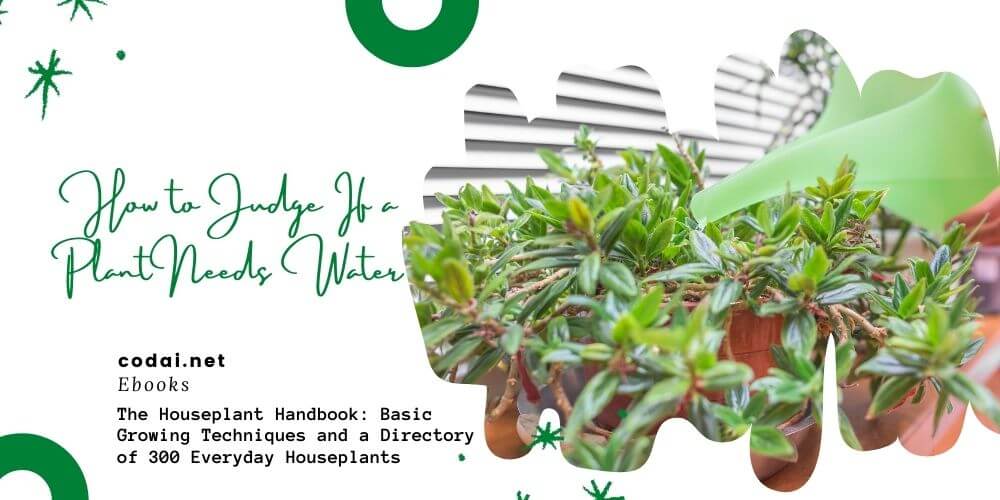[Ebook Việt hóa] The Houseplant Handbook: Basic Growing Techniques and a Directory of 300 Everyday Houseplants
[Ebook Việt Hoá] 300 Everyday Houseplants: The Need for Water (Nhu cầu tưới nước)
- Nguồn: [Ebook] The Houseplant Handbook: Basic Growing Techniques and a Directory of 300 Everyday Houseplants – David Squire
- Biên tập: Dũng Cá Xinh (Tháng 02/2022)
- Dịch: Team Codai.net
English
The Need for Water
Like all living things, plants are mainly formed of water and, if deprived of it, eventually die. Some, such as cacti and other succulents, have water-storage mechanisms in their leaves and stems, but most plants need a regular supply. The amount required varies through the year and is influenced by light intensity and temperature.
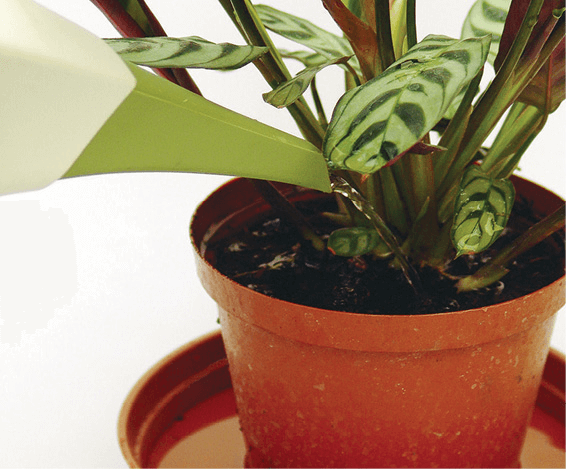
Watering a Houseplant
There are several ways to water a houseplant. The usual method is “over the rim.” This involves using an indoor watering can to pour water into the space between the top of the compost and the rim of the pot. Allow water to seep into the compost and drain through it into a saucer. After about 10 minutes, tip away excess water from the saucer.
Alternatively, where it is essential not to moisten the leaves (especially those that are hairy and soft, such as saintpaulias and Episcia cupreata), stand the pot in a bowl shallowly filled with water. When moisture rises to the compost’s surface, remove the potted plant and allow excess water to drain.
How to Judge If a Plant Needs Water
More houseplants die each year from too little or too much water than for any other reason.
Judging when to water is a skill derived from experience, although in recent years several specialized pieces of equipment have helped to take the guesswork out of this task. Year-round water requirements for individual types are indicated in the plant directory in Part Two. Here are several practical ways to judge if a plant needs water.
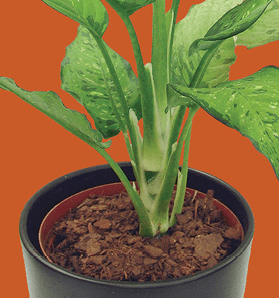
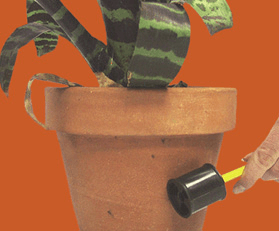
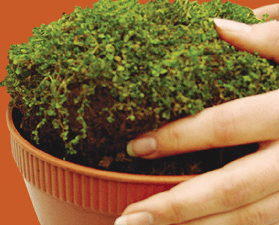
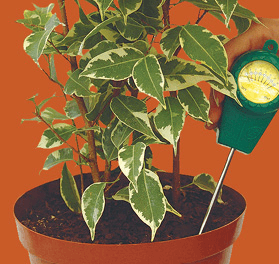
Saving a Plant with Exceptionally Dry Compost
Sometimes, compost becomes exceptionally dry, especially if watering is neglected in the summer or during vacations.
- If neglect is only superficial, stand the plant on a well-drained surface and water the compost two or three times. At each watering, the compost expands and makes it better able to retain moisture when more water is applied.
- If a plant is dramatically wilting, remove dead flowers and leaves and stand the plant in a bowl shallowly filled with water. When water seeps up to the surface of the compost, remove the plant and allow excess moisture to drain.
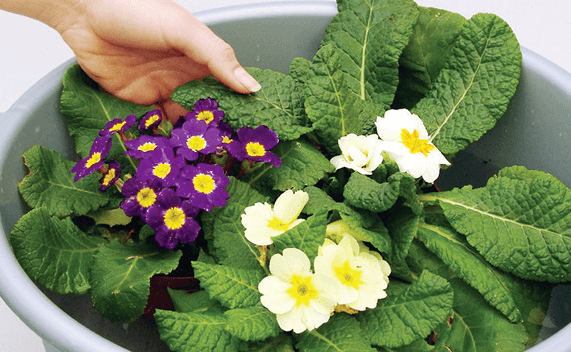
Rescuing a Plant with Wet Compost
In winter, when houseplants are usually not growing rapidly, plants are sometimes excessively watered, resulting in leaves and flowers wilting. If the compost is not totally saturated, there is a good chance of rescuing it.
With the plant still in its pot, support the compost with one hand and invert the plant and pot. Remove the pot. Use an absorbent cloth or disposable paper towel to soak up excess moisture—repeated wrappings are usually needed. Leave the root ball wrapped in absorbent paper until dry, but not bone-dry. If the root-ball is packed with roots that hold it together, omit the wrapping. When the compost is only slightly moist, repot the root-ball into a clean pot.
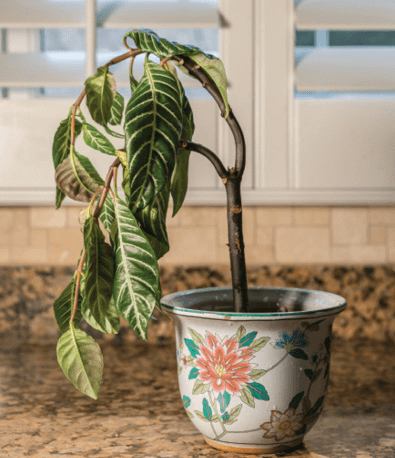
Rescuing and Repotting a Plant with Wet Compost
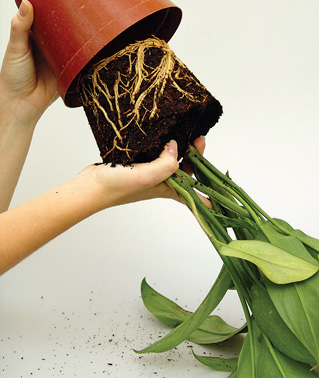
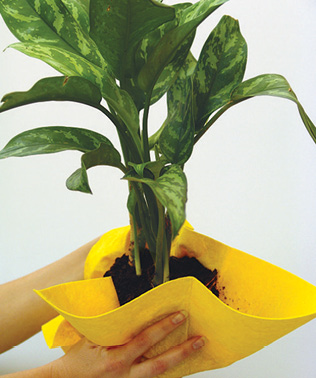
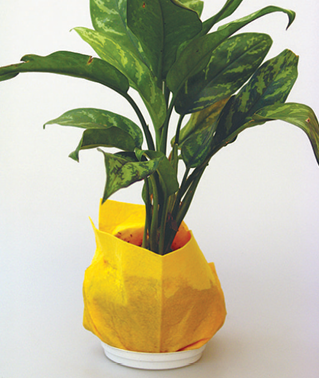
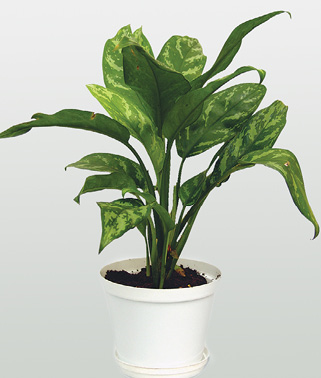
Type of Water
Most houseplant enthusiasts use tap water, which suits the majority of plants. It is clean and readily available, and it is ideal as long as it is not too cold. However, houseplants such as azaleas dislike lime and grow best in slightly acidic soil. If the tap water is alkaline, boil it and allow it to stand until cool before use. Collecting defrosted iced water from a refrigerator and allowing it to reach room temperature is another option.
Rainwater is ideal, but ensure that it is clean and has not fallen on a dirt-contaminated roof or become stagnant in a barrel.
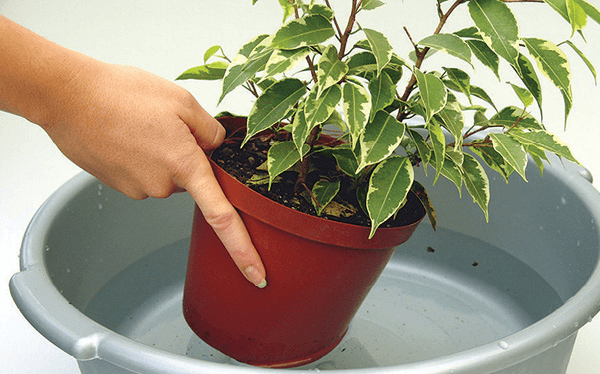
Tiếng Việt
Đang cập nhật
